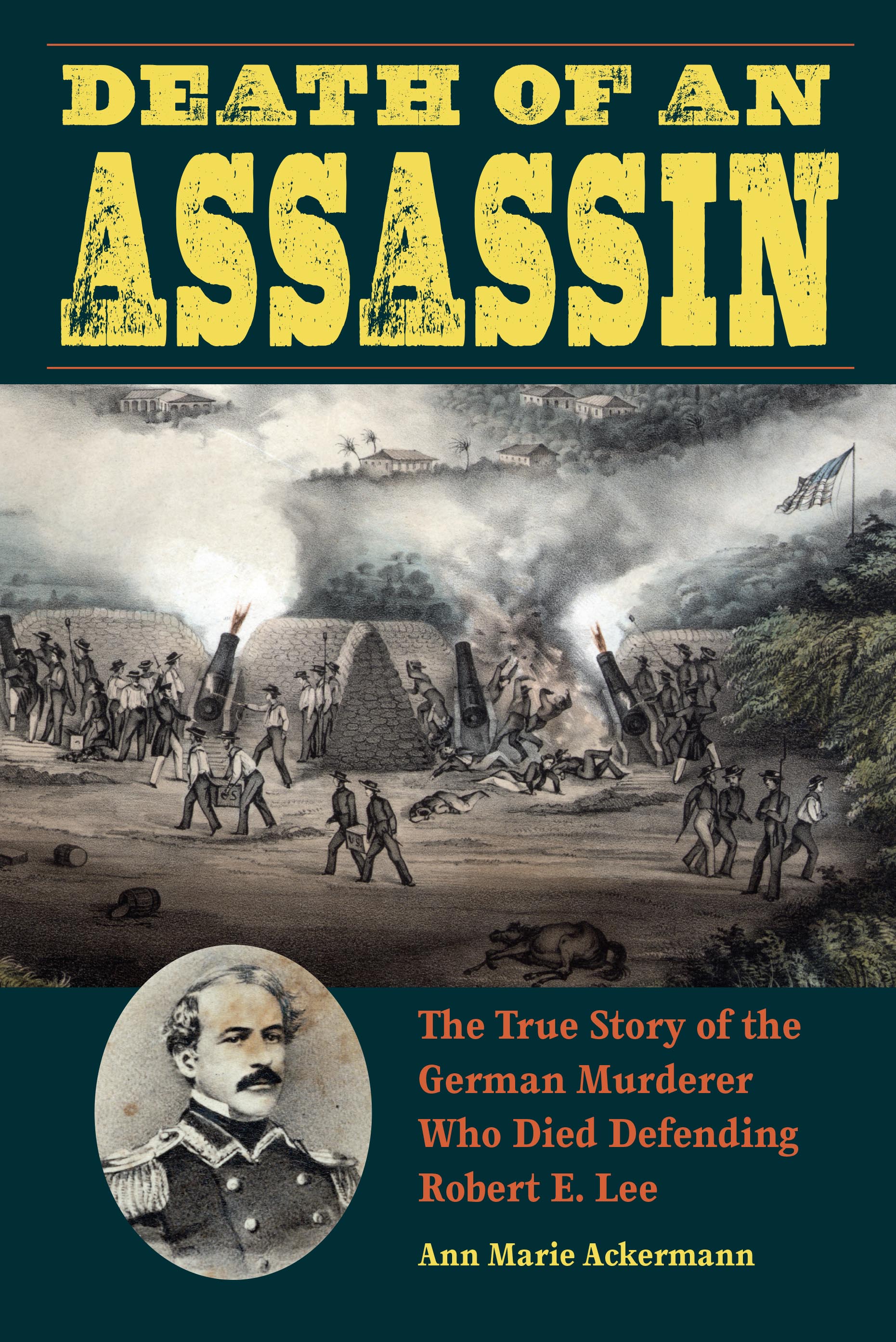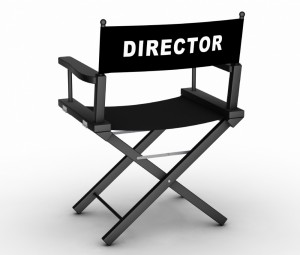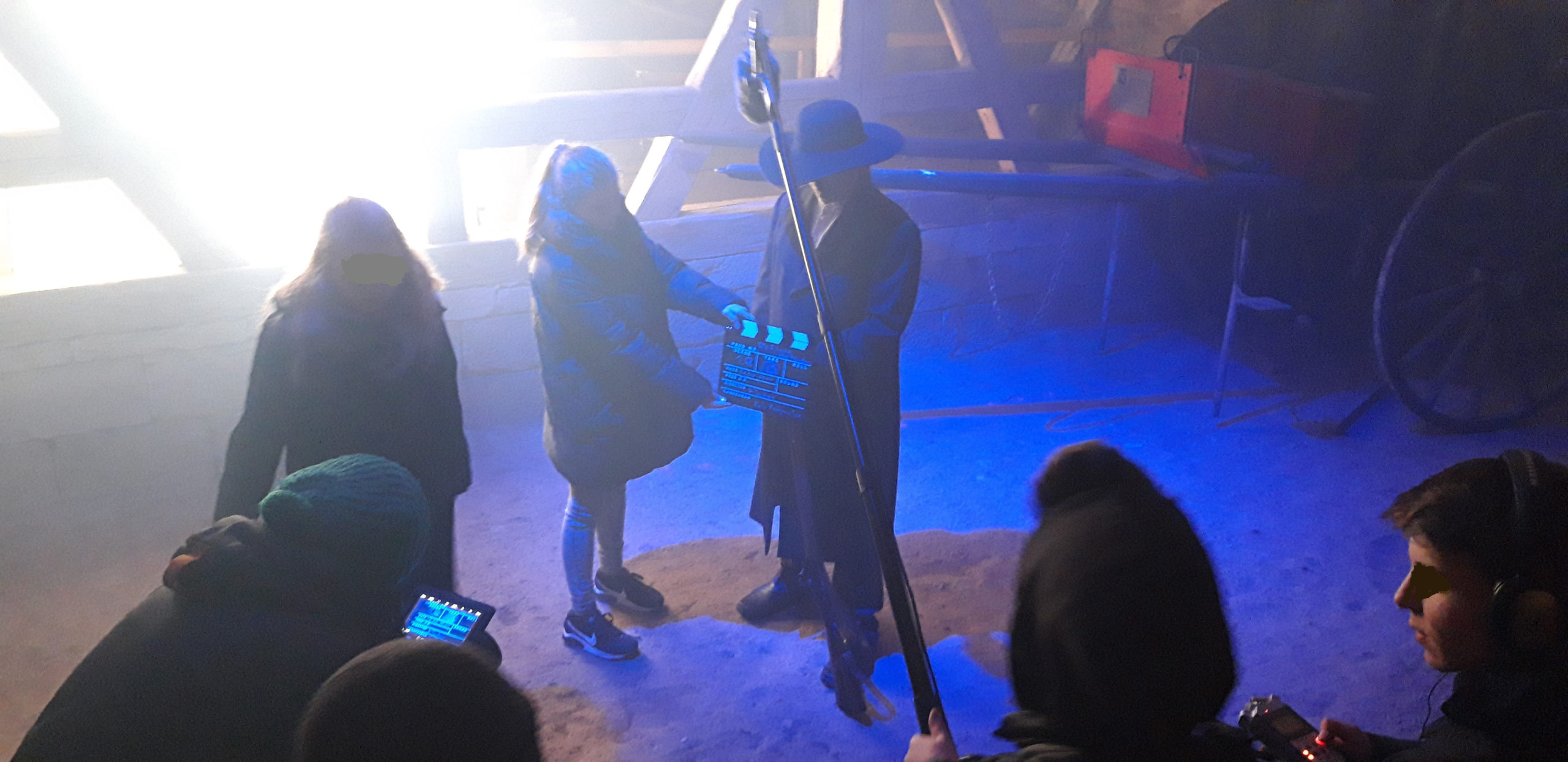 When the director pointed out a plot hole in my movie script, I winced.
When the director pointed out a plot hole in my movie script, I winced.
We were walking through the old section of a German town, scouting possible shooting locations, and she was trying to imagine the film, scene for scene. “If you don’t put the murderer and victim together right away,” she said, “the audience won’t figure out their connection. We need to add a scene of the murderer stalking the victim at the beginning so they don’t come across as two separate characters with separate stories.”
Ouch. Why didn’t I think of that?
 In 2017, I published a book about the murder case, the record-breaking 1835 assassination of a German mayor. When the local museum in my German town decided to create a film for a museum exhibition on the murder, they asked me to write the script, and then we hired a film school to produce it. A historical murder is not only a fun topic for students learning their craft, but we reaped the benefits of working with school’s staff, including a professional director and cameraman.
In 2017, I published a book about the murder case, the record-breaking 1835 assassination of a German mayor. When the local museum in my German town decided to create a film for a museum exhibition on the murder, they asked me to write the script, and then we hired a film school to produce it. A historical murder is not only a fun topic for students learning their craft, but we reaped the benefits of working with school’s staff, including a professional director and cameraman.
The director’s comment about the plot hole made me realize she was a writer, too, and that I, as an author, can learn from her. Here are some of the things I picked up. I hope they can help you, too.
Directors are visual story tellers. Our medium consists of words, theirs, images and sound, but we both share a passion for clear communication of plot points, characterization, and location. Like a translator, a director transforms the written word of the script into a tale writ in light and tone. Many people, when reading a book, see the action in their minds. I sure do. Images and sounds in your story might help your reader create that mental movie theater that makes reading so enjoyable.
 Directors, like editors, are on your team. I’d never written a movie script before, so it wasn’t too surprising that the director found some problems. She made it clear, though, we would work together to find solutions. The first step was the storyboard. Every step of the way, she tried to imagine how an audience would receive the scene, and in the larger sense, the plot. Then she critiqued and edited. The result was a clearer story.
Directors, like editors, are on your team. I’d never written a movie script before, so it wasn’t too surprising that the director found some problems. She made it clear, though, we would work together to find solutions. The first step was the storyboard. Every step of the way, she tried to imagine how an audience would receive the scene, and in the larger sense, the plot. Then she critiqued and edited. The result was a clearer story.
An editor’s honest feedback is like manure. It’s uncomfortable. It stinks. But there’s power in that stuff. If you accept the critique, pull on your rubber boots, pick up your pitchfork, and work those suggestions into your writing; you will have a better product come harvest.
Don’t interrupt. Okay, I’ll admit it. I was tempted to interrupt during scene one because I didn’t like the instructions the director was giving the actor. They just didn’t fit my image of that scene. I had read stories, though, about authors vexing directors on movie sets and didn’t want to become a nuisance.
 My director had her image of the scene, however. And who is to say hers wasn’t better than mine? I discovered my best course was to keep my mouth shut and let her surprise me. Scene one depicted the murderer loading his rifle in an empty barn. The director hauled in a fog machine, filled the barn with drifting vapors, and backlit the actor with blue light, creating a spooky atmosphere I would have never imagined. Bravo! I had no complaints by the time we finished.
My director had her image of the scene, however. And who is to say hers wasn’t better than mine? I discovered my best course was to keep my mouth shut and let her surprise me. Scene one depicted the murderer loading his rifle in an empty barn. The director hauled in a fog machine, filled the barn with drifting vapors, and backlit the actor with blue light, creating a spooky atmosphere I would have never imagined. Bravo! I had no complaints by the time we finished.
During the second to last scene, the producer – the museum director – couldn’t contain himself and did interrupt. He wanted an interaction between the actors at that particular location because it was particularly scenic and historic. The director refused. “That would ruin the denouement in the last scene with the final fadeout,” she said. She really is a writer, I thought. I asked the producer to leave her alone: His last minute suggestions could only hammer her well-thought-out storyline out of joint.
Directors use authors as consultants. Whereas I didn’t interrupt, the director did ask me a lot of questions. We, as authors, have researched our subject matter and know it best. The actors and director will mine their knowledge. Which hat was most appropriate for 1835? Would the murderer have preferred a narrow or a wide brim on his hat? And when an actor changed his lines during a shot, the director asked me, as the author, if we could leave the words as is.
 After nine hours of shooting, I was exhausted. When I got home, I stretched out on the couch and turned on the Outlander series to relax. And when the credits rolled, I noticed for the first time that Diana Gabaldon is listed not only as the author, but as a consultant. The more an author knows about a place, a time period, a culture, etc., the more color and texture she can add to her story, whether it be in the form of a book or film.
After nine hours of shooting, I was exhausted. When I got home, I stretched out on the couch and turned on the Outlander series to relax. And when the credits rolled, I noticed for the first time that Diana Gabaldon is listed not only as the author, but as a consultant. The more an author knows about a place, a time period, a culture, etc., the more color and texture she can add to her story, whether it be in the form of a book or film.
Film production is hard work. Of course I pitched in to help the museum produce the film. Whereas a Hollywood production involves hundreds of defined roles, the production of a small film like mine might fall to just a few shoulders. But in a small production, the director will assist.
She provided contracts and releases for the actors to sign. She also gave us location contracts for private property owners. I talked to neighbors to make sure they were on board. Then there was the city. The director needed to apply for a film permit with the city administration; we helped her. We had to set up no parking signs and block traffic (no one needs a car in a movie set in 1835). Because the film showed the murderer shooting a rifle (which we loaded only with powder, not lead!), we needed to clear the production with the police and organize a crew member licensed to carry weapons. The museum arranged a base camp for the actors and crew (25 people) and had to feed them during the nine-hour shoot. We had to track down historic costumes and arrange for parking spaces for the crew. We also needed people to guard the shooting locations to make sure passersby didn’t walk through a scene during a shoot.

Yes, it was a lot of work, almost as exhausting as writing my book. But I learned so much, it was worth it. Writing makes you a better storyteller, and so does producing a film.
Ann Marie Ackermann is the award-winning author of Death of an Assassin: The True Story of the German Murderer Who Died Defending Robert E. Lee (Kent State University Press, 2017). The German museum exhibition about the murder in her book will run from April through October in the Museum im Steinhaus in Bönnigheim, Germany. You can see the film in the exhibition.
[image credits:Image 1: Author Ann Marie Ackermann with the clapperboard
Image 4: Scene 1, take 3 with the murderer in the barn]
